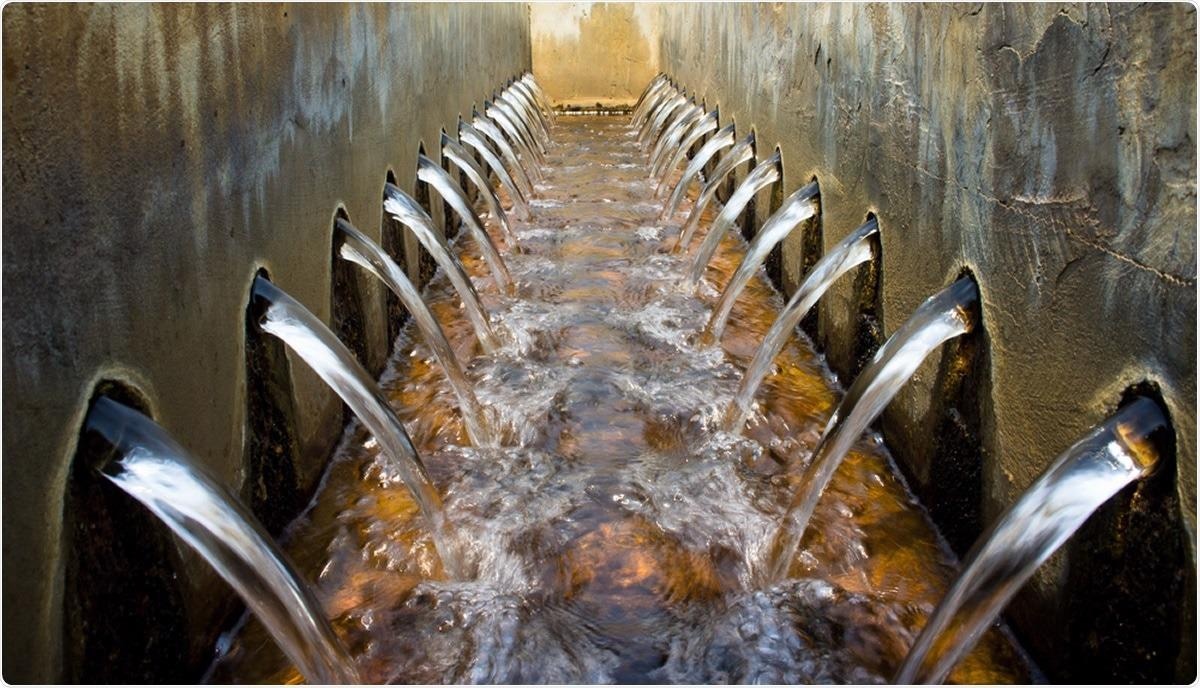The study also points to the inefficiency of currently deployed treatment systems in inactivating and removing the novel virus from the environmental waste, which could eventually pose a potential health concern to the vulnerable population such as wastewater workers that handle the wastewater or farmers who use such treated environmental material in their fields.
Therefore, the team suggests the use of adequate personal protective equipment for the wastewater workers and urges them to use caution while using the reclaimed water for use in rural settings.

Study: A safe haven of SARS-CoV-2 in the environment: prevalence and potential transmission risks in the effluent, sludge, and biosolids. Image Credit: Gameanna / Shutterstock
How do the terms effluent, sludge and biosolids differ?
Effluent is the liquid part of the sewage that comes out of a sewage treatment plant or septic tank after the completion of a treatment process. Sewage treatment aims to remove the contaminants from sewage to make the residual material suitable for reuse or direct discharge to the surrounding environment.
Sludge is the settleable solid organic matter separated from the liquids (effluent) and created during the treatment of wastewater.
Biosolids are produced later once the sludge undergoes additional treatment and stabilization to remove pathogens and create a stable product that meets the applicable criteria for beneficial recycling.
Background
The existing precautionary measures towards handling and exposure to various environmental materials have suffered a significant paradigm shift with the emergence of the coronavirus disease 2019 (COVID-19) pandemic. Studies from several countries have reported the presence of SARS-CoV-2 or its RNA in the environmental materials, including the air and wastewater samples.
The complex organic matter present in sludge and biosolids is known to shield the SARS-CoV-2 against inactivation. However, despite being considered as potential reservoirs of SARS-CoV-2, sludge and biosolids as a health risk domain, have so far received lesser attention compared to the wastewater samples.
The knowledge of SARS-CoV-2 prevalence in the final outputs of the wastewater treatment plants that are expected to be free from the SARS-CoV-2 and other pathogens or at least reach a safe limit post appropriate treatment will help to assess the subsequent risk of transmission and infection for the wastewater workers, farmers, and other handlers of these environmental materials. The team, therefore, conducted the current meta-analysis to investigate the prevalence of SARS-CoV-2 in the effluent, sludge, and biosolids extracted from wastewaters.
Prevalence of SARS-CoV-2 RNA is highest in sludge, followed by biosolids and effluent
The statistical meta-analysis was performed on a total of 21 articles, comprising 11, 8, and 2 articles on effluent, sludge and biosolids, respectively, that met the final criteria established by the team.
Based on the meta-analysis, the prevalence of the SARS-CoV-2 RNA in the effluents, sludge and biosolids were calculated to be 27.51 (C.I. 95%, 6.14-48.89), 1012.25 (C.I. 95%, 104.78 -1019.71) and 30.59 (C.I. 95%, 10.10-51.08), respectively.
Biosolids, despite receiving further treatment, demonstrated higher SARS-CoV-2 RNA prevalence rates compared to that in the effluent. This indicates the ability of the viral particles to obtain protection for persistence in the solid medium.
SARS-CoV-2 viral envelope aids retention in sludge and biosolids
The hydrophobic nature of the viral envelope layer is responsible for affinity to adsorb to the solid particles present in sludge and biosolids, ensuring their survival in such materials if not subjected to advanced treatments. Solid particles as small as 0.3 mm have been demonstrated to shield the viruses from disinfection, thereby extending their persistence. Based on the observations of virus persistence in sludge, the team recommends the use of the sludge samples for the purpose of virus surveillance in the population.
Transmission and health risks associated with effluents, sludge, and biosolids
The long exposure to the raw or partially treated sewage sludge, such as during manual sludge handling, indicates a high risk of transmission to the wastewater handlers. Aerosols containing the viral particles, generated during the various steps of wastewater processing and during the application of effluents and sludge in the field, also pose a potential risk SARS-CoV-2 transmission to the wastewater workers and farmers.
Moreover, the direct application of inadequately or non-treated effluents, sludge, and/or biosolids to the soil and plant in some developing and low-income countries can result in virus migration to the subsurface system, groundwater, or uptake by the plants, thus leading to transmission via either direct contact or ingestion of contaminated water or crops.
“Adequate protections, including the use of personal protective equipment should be ensured for the wastewater/sludge workers, while the use of reclaimed wastewater and other materials like sludge and biosolids should be done with caution, especially in rural settings of developing and low-income countries where water, sanitation, and hygiene are insufficiently deployed”, advises the team.
The group of people who are most vulnerable to exposure risk are wastewater workers, farmers and their families, consumers of farm produce, and residents in the areas irrigated with wastewater, especially children, aged people, and immunocompromised individuals
Although the reuse of effluent, sludge, and biosolids can efficiently address the issue of perennial water scarcity in many countries, enhance nutrient recycling, improve soil health, mitigate the direct discharge of wastewater into water-bodies, these environmental materials need to be carefully managed to prevent the associated public health risks.
“The current treatment processes alongside the guidelines on the use of environmental materials like effluent, sludge, and biosolids should be revisited and improved upon to efficiently address the recalcitrant nature of SARS-CoV-2 RNA and other emerging pathogens.”, recommends the team.
The team also emphasizes executing further studies on estimating the prevalence of infectious SARS-CoV-2 particles in the environmental materials. The demonstration of genetic material/RNA does not imply the viability or infectiousness of the virus and health implications ingesting SARS-CoV-2 RNA are lacking.